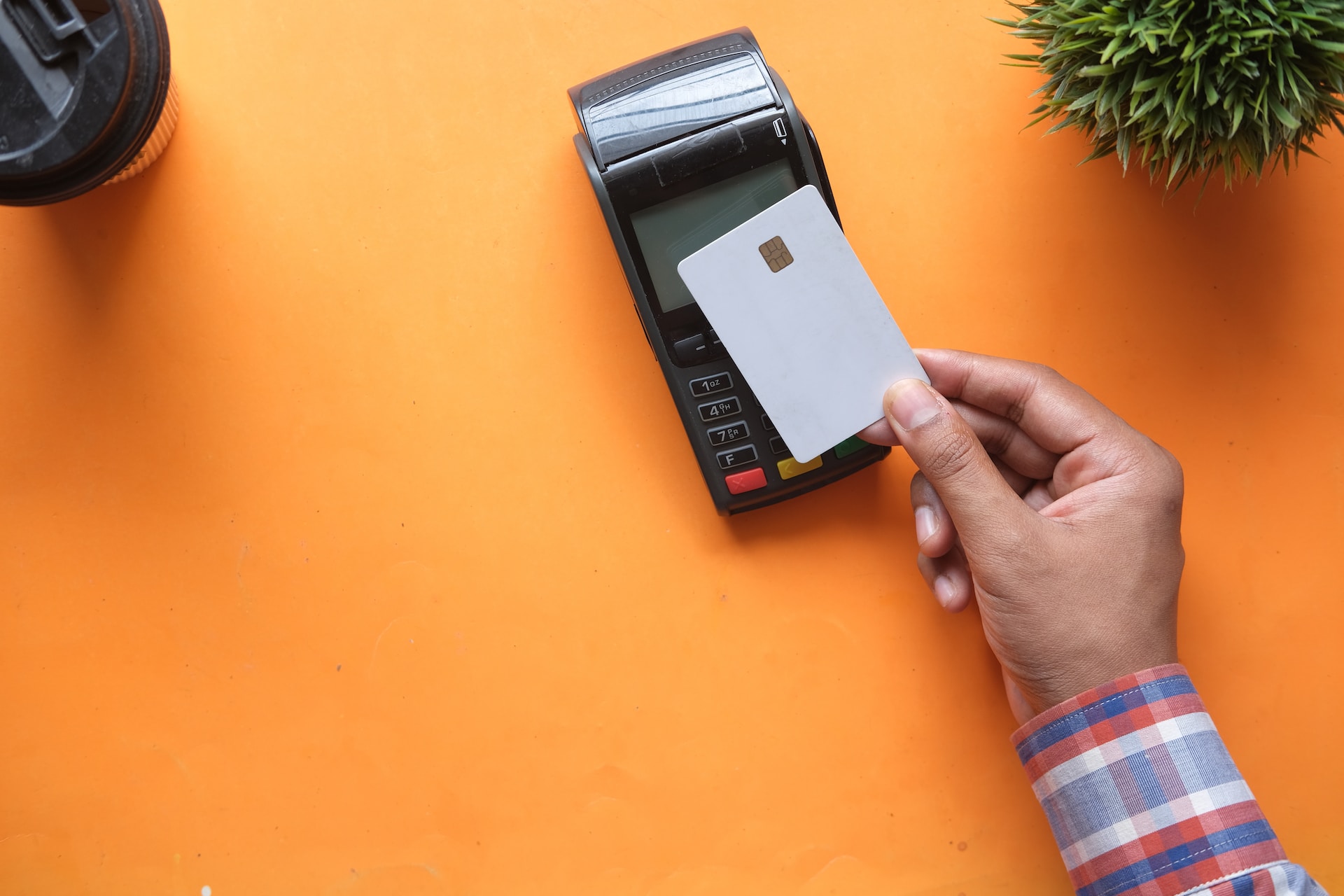Have you ever looked at bookkeeping examples of transactions and wondered how to make sense of them?
Good news, cause we’re going to help you read these transactions with clarity and understanding!

In this post, we’ll begin by defining what a Chart of Accounts is. Then, we will break down some common business transactions. At the end, we will define and describe how to prepare 3 important financial statements.
What’s the Importance of Bookkeeping?
We can’t stop stressing how crucial bookkeeping is for businesses.
First, bookkeeping is necessary to stay compliant with the tax regulations and other business laws.
Next, bookkeeping helps you maintain organized records. These records allow you to carefully monitor your budgets, income, expenses, and more.
Third, bookkeeping is essential to generate key reports. Reports improve business decisions and display financial status to investors.
What Is A Chart of Accounts?

A Chart of Accounts or COA is a master list of all the accounts you use as a business to record your financial transactions. You use this in tandem with a general ledger to get a full view of your accounts and transactions. You can think of your Chart of Accounts like the overview or menu of your records and your ledger is the details of those accounts and sub accounts.
A COA works in both single entry and double entry accounting methods. However, we believe double entry maximizes the value of a COA.
Before we go through some double entry bookkeeping examples, let’s talk about the parts of a COA.
Elements of a COA
COA appearance can vary depending on the complexity of a business, but typically includes:
Account Identification Number – This is a numbering system owners and bookkeepers use to easily categorize and locate certain transactions. Depending on the complexity of your business needs, the numbers can be 3 to 7-digit sequences.
Each account starts with its own designated number that is common across industries.
- Assets =1
- Liabilities = 2
- Equity = 3
- Revenues = 4
- Expenses = 5
Digits, following the main account numbers, signify specific account subtypes.
Account Types and Subtypes – Accounts and sub-accounts are records you use to categorize transactions.
The 5 main types of accounts are:
- Assets – Anything your company owns that has a tangible or intangible value. This includes money owed to you on credit.
- Liabilities – Anything your company owes to another entity.
- Equity – This is the difference between your assets and liabilities. This is the value that investors would get if a company liquidates.
- Revenue – This is the total income earned through business operations within a specific period.
- Expenses – This is all money spent in order to keep business running within a specific period.
You can have as many subtypes as you need. Common subtypes include Accounts Payable (liabilities) Accounts Receivable (assets), and overheads (expenses).
Account Descriptions – These are brief names or indicators that describe accounts and sub-accounts.
Debits and Credits
These terms refer to the direction that values flow in and out of your accounts.
- Debits – refers to money going into an account; You record a debit on the left side of journal entries. A debit increases the balance on an asset or expense account and decreases equity or liability account balances.
- Credits – refers to money exiting an account; You record a credit on the right side of journal entries. A credit decreases the balance of an asset or expense and increases the balance of liability, equity, and revenue accounts.
Bookkeeping Examples

1. Cash Sales Transaction
Transaction: Received $500 in cash for product sales.
COA:
| Account No. | Account Type | Account Name |
| 101 | Asset | Cash |
| 501 | Revenue/Income | Product Sales |
In this instance, you debit your cash asset account $500, meaning you increase the balance. You then credit revenues $500. You always record revenues as credit.
2. Credit Sales Transaction
Transaction: Sold products on credit for $1,000.
COA:
| Account No. | Account Type | Account Name | Debits | Credits |
| 110 | Asset | Accounts Receivable | $1,000 | |
| 106 | Revenue/Income | Sales Revenue | $1,000 |
Bookkeeping examples of transactions on credit look very similar to those done in cash. The difference is in which asset sub-account you record it in. So, debit $1,000 to the Accounts Receivable asset account and credit that amount from your Sales Revenue sub-account.
3. Purchase Transaction

Transaction: Purchased inventory for $800 on credit.
COA:
| Account No. | Account Type | Account Name |
| 120 | Asset | Inventory |
| 210 | Liability | Accounts Payable |
Here, we see the relationship between asset and liability accounts. We recorded it as a $800 debit on the asset account. Because inventory is product, it has innate value, and therefore, is an asset. However, because we purchased it on credit, we don’t record it as an expense. Rather, we record the $800 in Accounts Payable – a liability account.
If we were to pay the bill, we would then record it as a credit to our cash asset account and debit the Accounts Payable account.
4. Expense Payment Transaction
Transaction: Paid $200 for office supplies.
COA:
| Account No. | Account Type | Account Name |
| 413 | Expense | Office Supplies |
| 101 | Asset | Cash |
You record an expense made directly with cash as a $200 debit to the expense account. Credit the same from the cash asset account this time.
5. Loan Transaction
Transaction: Received a loan of $5,000 from a bank.
COA:
| Account No. | Account Type | Account Name |
| 101 | Asset | Cash |
| 211 | Liability | Loans Payable
(Accounts Payable) |
Here, we debit our cash asset account and credit our liability account. This process is very similar to Example 3.
6. Owner’s Investment Transaction

Transaction: The owner invested $2,000 of personal funds into the business.
COA:
| Account No. | Account Type | Account Name |
| 101 | Asset | Cash |
| 301 | Equity | Owner’s Equity |
This is one of the trickier examples of bookkeeping for a small business owner, though it is common. Here, a business owner takes money out of his own pocket to fund the business. By injecting $2,000 into the business (cash account), the owner has slightly raised the book value of the company. We record $2,000 as credit in an equity account because it is what a business owes to its shareholders/owners.
7. Expense Incurred on Credit
Transaction: Incurred utility expenses of $300 on credit.
COA:
| Account No. | Account Type | Account Name |
| 411 | Expense | Utilities Expense |
| 210 | Liability | Accounts Payable |
In this scenario, because you are on credit, you can already debit $300 to your expense account. The partner account credited would be Accounts Payable. You list the transaction as credit to this account until you can make the payment.
8. Payroll Transaction
Transaction: Paid employee wages of $1,500, including taxes and deductions.
COA:
| Account No. | Account Type | Account Name |
| 420 | Expense | Salaries and Wages Expense |
| 101 | Asset | Cash |
This transaction is essentially the same as an Expense Payment Transaction.
Note: Businesses often list payroll taxes in a payroll taxes expense sub-account.
9. Bank Reconciliation

We now move on from bookkeeping examples and into financial statements. Let’s begin with the Bank Reconciliation Statement.
Process:
Bank reconciliation is weighing an external bank statement against your general ledger. Specifically, you or a bookkeeper compares the balances and transactions of your cash account with your bank account. The statements practically never align and so you place them side by side to look for and correct errors. Discrepancies may include unaccounted bank fees, fraud, uncleared checks/payments, or other unregistered transactions.
This process is mostly about recording changes in the cash account to reflect the bank statement.
Report:
A Bank Reconciliation Statement is where you list discrepancies and justify or explain the reason behind them. This statement outlines your business activities within a particular period. In it, you compare both cash and bank account balances, ensuring that they align at the time of reporting.
10. Income Statement Preparation
Process:
One of the first things you need for an income statement is a trial balance. This contains the total debits and credits of all ledger account balances at the beginning and end of a specified period.
Next, you calculate revenues. Find the gross income by subtracting CoGS (Cost of Goods Sold). Then, add up all other operational expenses. Add up profits before and after taxes. Finally, calculate your net income.
Report:
An Income Statement or Profit and Loss Statement is a key financial statement that gives you a look into the financial health of a business. This document deals with the revenue and expense accounts. It shows your gross and net profits as well as your spending for a particular period. It details the particulars listed above and includes business info and date of reporting period.
11. Balance Sheet Preparation

Single-entry bookkeeping makes use of only the first two statements. The double entry bookkeeping system adds the balance sheet.
Process:
The first thing you need to do when preparing this statement is to define the reporting period, such as monthly or quarterly.
Next, list all of your current and non-current assets separately, line by line. Current means easily convertible to cash and non-current means the opposite. Add them all together.
Then, you want to determine current and long-term liabilities. Current liabilities are due within the year and long-term ones are not. Add them all together.
Third, calculate equity. Determine retained earnings and total stockholders’ equity.
Finally, add liabilities to equity and check it against your assets to see that they match. Correct discrepancies, if any.
Report:
The Balance Sheet reports on three accounts: assets, liabilities, and equity. This statement is the one that probably relates the most to our double entry bookkeeping examples. It operates under the principle that Assets = Liabilities + Equity. It gives you an overview of what you own as a company, the amount of debt you have, and your equity value. Using certain balance sheet ratios, investors can get an idea of how well the business is performing.
What Is EcomBalance?

EcomBalance is a monthly bookkeeping service specialized for eCommerce companies selling on Amazon, Shopify, Ebay, Etsy, WooCommerce, & other eCommerce channels.
We take monthly bookkeeping off your plate and deliver you your financial statements by the 15th or 20th of each month.
You’ll have your Profit and Loss Statement, Balance Sheet, and Cash Flow Statement ready for analysis each month so you and your business partners can make better business decisions.
Interested in learning more? Schedule a call with our CEO, Nathan Hirsch.
And here’s some free resources:
- Monthly Finance Meeting Agenda
- 9 Steps to Master Your Ecommerce Bookkeeping Checklist
- The Ultimate Guide on Finding an Ecommerce Virtual Bookkeeping Service
- What Is a Profit and Loss Statement?
- How to Read & Interpret a Cash Flow Statement
- How to Read a Balance Sheet & Truly Understand It
Conclusion
You are now armed with the knowledge of how to read and understand transactions and write your own entries! We hope our bookkeeping examples list of transactions gave you a better grasp on COAs, reports, and double entry bookkeeping. You also have a glimpse into how to generate reports from these transactions. These reveal the financial health of your business. With this knowledge, you gain insights on how to improve profitability and catch the eyes of investors.








